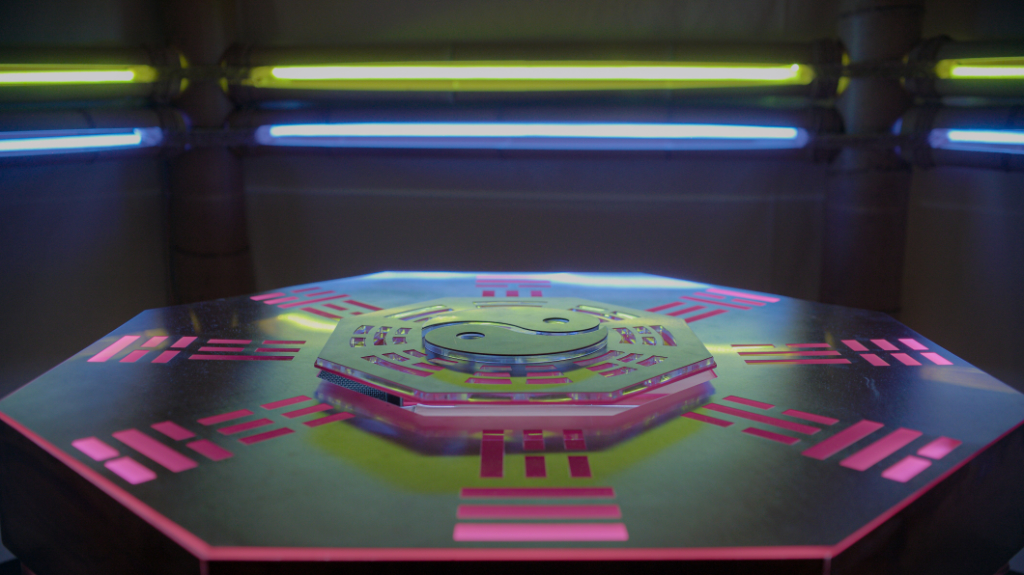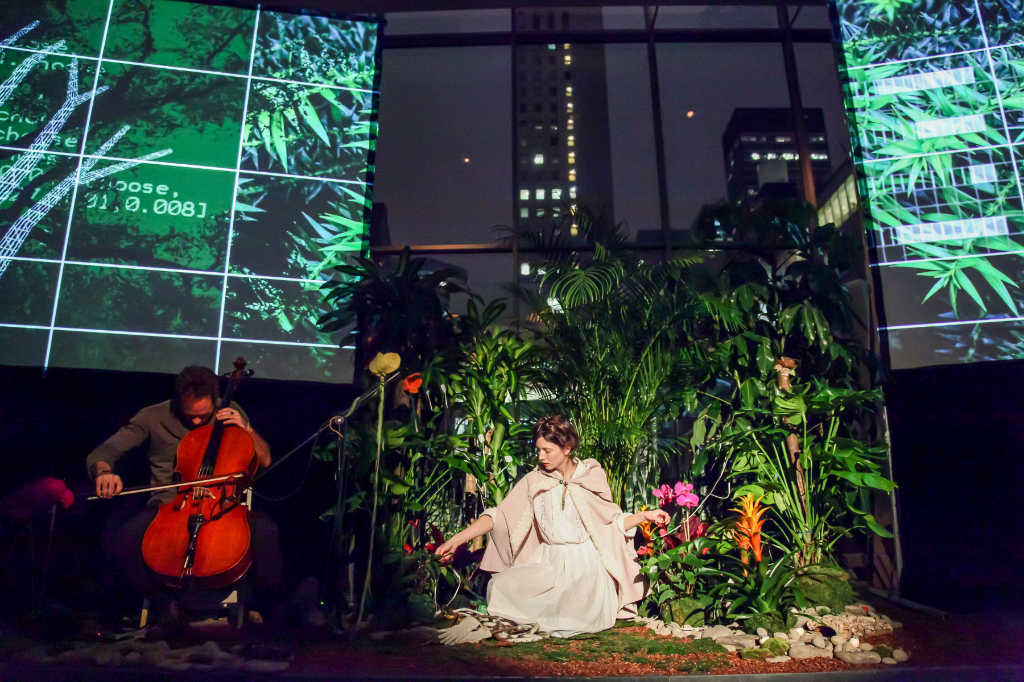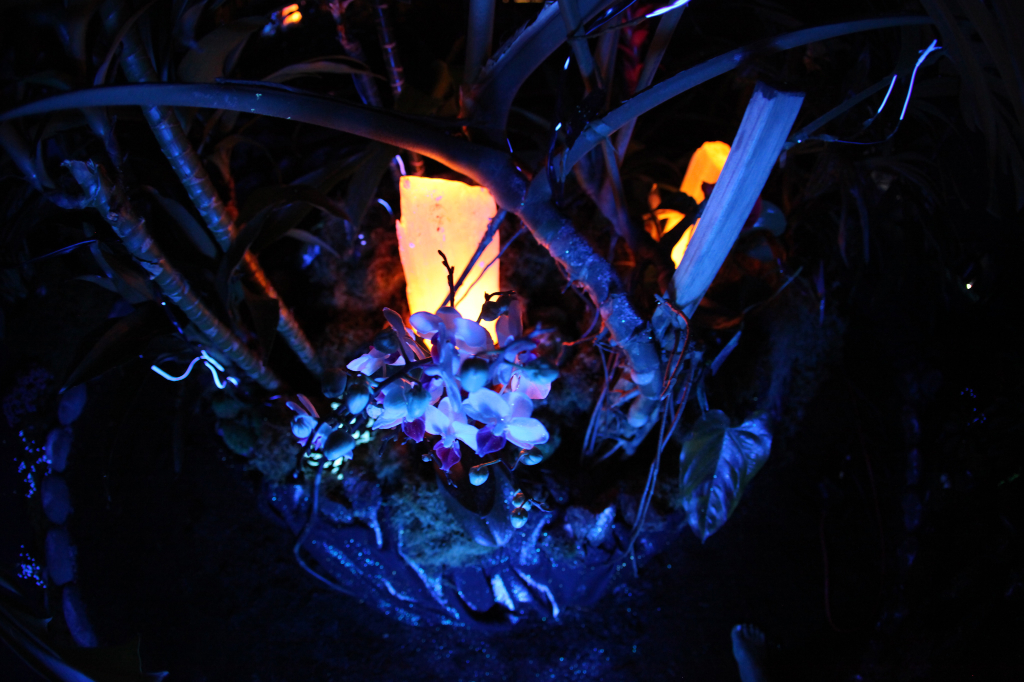Interview by Silvia Iacovcich

English sound artist and environmental designer Mileece gives a voice to plants. Immersed in a musical environment from a young age —meeting Stevie Wonder in her living room was one extra perk—, her interest in composition was sparked through violin and piano lessons.
At the same time, Mileece developed a growing curiosity about renewable energy, fuel cells and climate change. By combining her studies in environmental science and economics, documentary filmmaking and sound engineering, she entered the realm of sonic arts as a pioneer in organic electronic music.
At 25 years old, having been inspired by The Secret Life Of Plants – a book from 1973 that explores experiments regarding plant sentience she watched and read as a 19-year-old– the sound artist built dedicated hardware that transcribed plants’ electrical signals into the basic elements of sound design, allowing her to translate the language of plants into music.
Aged 22, a few years before that, using SuperCollider, she released her first album, Formations, a series of compositions inspired by cycles and patterns in nature, obtained via a computer-generated algorithm. Since then, her work has been acclaimed and exhibited in museums such as MoMA, NYC, and TATE Modern and venues like Kew Gardens, Sonos Studios, and Festivals (Microfest, Decibel, BHF, amongst others).
Her work is a portal for the audience to comprehend the natural kingdom, analysing the contrast that naturally emerges between organic and urban environments; technology becomes a medium to reconnect with plants.
Sonic Garden, a fascinating interactive project exhibited in 2015 at Sonos Studio LA, gives voice to a reality usually unheard. Entering a room where our world becomes audible rather than visible, we interpret plant and human interactions into what Mileece calls “Aesthetic Sonification”.
As all living beings – plants, humans, animals – emit bioenergy that can be captured and synthesised, the garden lets us experience life in a multi-channel soundscape that we perpetually modify through our existence in space, generating new sounds in real time.
Pip’s Plant Parlour is a beautiful microcosm, a sanctuary from the overwhelming noise of our cities. A zero-emission installation reproducing organic sound baths and nature-controlled interactive light is a paradise for well-being that aims to regenerate the soul, find calm, and energise yourself through plants’ power. The work of Mileece spans art, research, and education and aims at educating people on the value of bioecology and its application in our daily lives.
Her approach is visionary and inclusive, starting with educating new generations. The BioLibraries are a brilliant experiment, envisioning what she calls an “Acoustic Sanctuary”. Interpreting the learning environment into a dome with all the qualities to represent the perfect habitat for children.
The dome is pollution-free, plant-oxygenated, calming, and restorative through fusing its acoustic environment with interactive soundscapes – the project contributes to generating a positive mindset and healthy lifestyle for children who learn to interact with nature in a calm environment.
Mileece is the founder of Biophilica, an organisation of visionaries and technology leaders working on conservation, technology and art, engaged in delivering experiences that bring people to a closer awareness of climate issues such as green energy, renewable energy, supporting a culture of eco-citizenry, that is more aware of its own responsibility towards the Earth.


Your grandfather worked on the IBM team that programmed the first computer-generated song. Your dad (Nick Abson) ran a recording studio and became a renewable energy entrepreneur in the 90s. It seems the natural process for you was to become a pioneer of organic electronic music. How did this awareness of your role in combining ecology and arts develop and evolve during the years, and what came first?
I’m not sure it did as much as it would be fun to say it did! I was around 2 or 3 years old when the studio sadly closed, and although I was around until then and my bedroom was the live room they had before they got the space in Covent Garden, it ended there as far as my parents’ involvement in music. I did meet Stevie Wonder in my living room, though, and sometimes I think he gave me a soupçon of musical juju through osmosis when he shook my little hand, which I have to say, he did without hesitation as if he could easily see me.
The ‘grandfather’ you mentioned was a man who adopted my father and I never met. That story was just an anecdote pushed by publicists after I mentioned it once when asked about my family, and I think they saw it as a part of that ‘good angle’ they felt they needed to sell my ‘algorithmic computer music’. Having said that, what he did was exciting and, I think, influenced my dad, who influenced me, but it’s not the direct evolution that would make for the exciting story it could.
When my dad got into fuel cells, or as I like to call ‘Moon Cells’, I had little idea about what he was doing as he was in the UK and I was in LA. I was about 15 years old, playing the piano quite a lot and stressing out that if I didn’t help do something about what was happening on the planet, there wouldn’t be one to play music in.
I couldn’t play the piano – no air to breathe! I also was extremely upset (as I still am) about habitat loss and the suffering of innocent creatures. So I took my GED that year, which gets you out of US high school early, went back to the UK and started studying environmental science and economics the following year.
I thought it was the right idea to ‘put the eco back into economics’, as I used to say. I didn’t even realise what fuel cells were until I accused my dad of being an ‘oil man trying to get rich’, having confounded ‘fuel cell’ with ‘sell fuel’ – understandably and just one of the reasons I like Moon Cell.
I remember him practically leaping out of his skin when I said that. I was immediately embarrassed having made some hugely insulting and erroneous comment, then humbled as I realised, over the course of that conversation, how implementing fuel cells was and remains the hard work we need to do to solve, or somewhat now abate the effects of, the climate crisis.
Partly because of how we think fuel cells should be created and implemented, it’s a huge and extremely difficult undertaking, constantly under attack or dismissed, with hardly any support for what we see as the right strategy and will work for its purpose.
This is a technology accessible, cheap and easy enough to make to be led by communities and implemented as negative carbon waste to energy systems locally. As a result, my work with him has done much more to detract from my work in music and installations than help it, and vice versa! Although they are ultimately entirely allied so, fusing them is what I focus on when I can and what I want to see done before I expire.
You give plants a sound, a voice which otherwise would remain inaudible– technically, these sounds are the product of the bio emissions from plants living in geographical landscapes that are then processed through your programming. How does it work, and how much of your subjective and conscious choices lie in the final result?
I call the process “aesthetic sonification”; it involves the process of taking data and turning it into sound, but in a way that incorporates qualities that make that sound relatively ‘pleasing’ whilst still being informative.
For example, when I first wrote the Synths for Plants in 2005, I started with the concept of a ‘free jazz band’. Each instrument would be a synth designed with a basic fundamental waveform, playing together in a loose and interpretive manner. I created five additive and subtractive synths that played around a common mode.
As I did with my track Tau, I derived the mode from taking the Fibonacci sequence and then changing notes I didn’t think worked harmonically by using some other basic formulas that I just made up, like taking the difference between the notes, then dividing it by two, and adding that to the last note to see if that works better.
Eventually, as so many notes can combine in so many different ways within this type of aleatoric music, it whittles down to what sounds intriguing in almost any configuration of sequence or tandem iteration yet remains functional. I start with fairly strict principles, then try to get it all to fit together using my aesthetic sensibility where it doesn’t work.
You performed at MOMA, Whitechapel Gallery, and Kew Gardens, plus you worked on a variety of independent projects – have you noticed a transition of consciousness of the public’s experience of different ages or generations towards the subject of ecology or a new appreciation around the environmental theme during the years?
YES. When I started out, the ideas I presented were not mocked, or dismissed, even though I was trying to update and expand work that had already been fundamentally done. It took me five years to prove I could even try to do this project, and when I did, it was sabotaged – this is where I would love to name names, but my political correctness surpasses that urge!
When I started taking it around in various forms of presentation, quite a few people would come up to me and tell me plants couldn’t respond to their environment as they don’t have a brain and central nervous system.
Of course, it had been proven well before then and well enough that a brain and central nervous system aren’t prerequisites to being able to sense and respond to the environment, besides which, any reasonable assessment of plants and trees in general, even without science, will tell you as much.
Now, though, especially as of the last five years or so, lots of this information is in peer-reviewed research papers and even books, so on that front, it’s radically different! Also, people have (mostly) stopped thinking climate chaos is a vague notion to be dealt with at some point in the future by someone else and that caring for plants is just what hippies do, in general.
This is why I worry about the kinds of devices that people are peddling now cause it was a long stretch to get here, and if we make things that you could equally plug into a wet sponge for the same effect, we risk working against the best interested of plants, at least on a cultural level.
Your work often requires public interaction; as for the Treeweaver Project built around interactive landscapes, plants, and audio-video streams: how do you create and facilitate the collaboration between interspecies?
I try to build nice spaces and fun, relaxing, peaceful, engaging, educational, inspiring, accessible and hopefully even sometimes a little bit awesome!
There’s a dichotomy in your work that explores nature and tech working alongside, like the technology-embedded nature’s capes in ORBS – so it is a re-appreciation of the natural space through the use of human evolution and technical acknowledgement. How do you maintain this balance?
I do a lot of philosophical work on this idea that I have presented in talks and use as a general template for developing things. I just posted one of those talks on www.linktr.ee/mileece called the biophilosphere. Another is on the ‘Pips Plant Parlour’ page of my website. I explain it better there, but essentially, it’s looking at making technology biophilic, in the sense that it fits within the biosphere, not on top or around it, which many ‘commodities’ and how we treat them do.
Then I try to put that philosophy into practice. The biggest problem with that is cash developing and understanding of the need to take it there – and I mean, all the way there – when we design and produce technologies- not just the usual wealth-generating band-aid technology cleverly advertised by cults of personality as viable transitions to the same, which most often is not the case.
Horticultural and sound therapy both stimulate healing in human beings through frequencies: they can elevate your life. They may facilitate a deeper kind of interspecies connection that might benefit us all. Is a worldwide ‘eco-education’ really possible in your experience?
I’d say that my experience is a positive indicator of that. I only keep doing my work cause it seems to work! People very enthusiastically tell me they feel ‘enlightened’ regarding their relationship with plants and the general interconnectedness between humans and the biosphere.
If I can do that with a team of just me and a couple of other people on what is arguably a tiny budget for what it is, then I have to believe it can work on a larger scale. I always work towards that, so I’ve got to think!
What is your chief enemy of creativity?
Well, I have done quite a few projects with tooth abscesses, injuries, personal difficulties, lack of money, no sleep, inadequate equipment, no time whatever – all sorts of trouble- and I still do the thing and can motivate.
What it boils down to is first, people who act like they are the chief enemy, even though and despite which, they garner great benefit from your work and secondly, people who make bad versions of things you make, spend loads on marketing instead of figuring out their wrong version isn’t a version at all – or maybe they know but don’t care – and few others do either so your efforts seem wasted whilst also being sidelined and obscured.
Frustratingly, I’ve experienced both. I’ve never publicly talked about my bad experiences; I’ve been unable to convince myself to despite wanting to shout it all out from the tops of mountains. I think, though, when you’ve been knocked down, and it happens repeatedly, you can feel like there is no point trying anymore, and that is my chief enemy of creativity!
You couldn’t live without…
Asides from the obvious, clean air, water, food and shelter, health etc. I bet I don’t actually know and probably won’t until it’s too late to answer such a question!






